
From 1732 to 1867, the Russian Empire laid claim to northern Pacific Coast territories in the Americas. Russian colonial possessions in the Americas are collectively known as Russian America. It consisted mostly of present-day Alaska in the United States, but also included the outpost of Fort Ross in California, and three forts in Hawaii, including Russian Fort Elizabeth. Russian Creole settlements were concentrated in Alaska, including the capital, New Archangel, which is now Sitka.
Concepción refers to the Immaculate Conception of Mary, mother of Jesus, according to Roman Catholic Church doctrine. Concepción or Concepcion may also refer to:

Don Mariano Guadalupe Vallejo was a Californio general, statesman, and public figure. He was born a subject of Spain, performed his military duties as an officer of the Republic of Mexico, and shaped the transition of Alta California from a territory of Mexico to the U.S. state of California. He served in the first session of the California State Senate. The city of Vallejo, California, is named after him, and the nearby city of Benicia is named after his wife.
Luis Antonio Argüello was the first Californio (native-born) governor of Alta California, and the first to take office under Mexican rule. He was the only governor to serve under the First Mexican Empire and also served as acting governor under the subsequent provisional government, which preceded the First Mexican Republic.
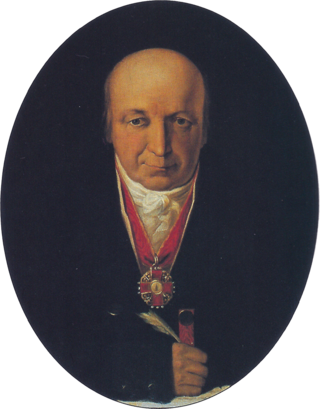
Alexander Andreyevich Baranov, sometimes spelled Aleksandr or Alexandr and Baranof, was a Russian trader and merchant, who worked for some time in Siberia. He was recruited by the Shelikhov-Golikov Company for trading in Russian America, beginning in 1790 with a five-year contract as manager of the outpost. He continued to serve past the end date of his contract.

The Russian-American Company Under the High Patronage of His Imperial Majesty was a state-sponsored chartered company formed largely on the basis of the United American Company. Emperor Paul I of Russia chartered the company in the Ukase of 1799. It had the mission of establishing new settlements in Russian America, conducting trade with natives, and carrying out an expanded colonization program.

Nikolai Petrovich Rezanov, a Russian nobleman and statesman, promoted the project of Russian colonization of Alaska and California to three successive Emperors of All Russia—Catherine the Great, Paul, and Aleksander I. Aleksander I commissioned Rezanov as Russian ambassador to Japan (1804) with the aim of concluding a commercial treaty. In order to get to his post he was appointed co-commander of the First Russian circumnavigation (1803-1806), led by Adam Johann von Krusenstern. Rezanov left the expedition in 1805 when it returned to Kamchatka after visiting Japan (1804-1805).
José Darío Argüello (1753–1828) was a Querétaro-born Californio politician, soldier, and ranchero. He served as interim Governor of Alta California and then a term as Governor of Baja California.
José Joaquín de Arrillaga was a Basque officer who served twice as Governor of the Californias and as the first Governor of Alta California, following the partition of the Californias in 1804. He was the only Spanish-era governor to be buried in California.
The Alta California Telegraph Company was a telegraph company which operated in the mid-19th century within the state of California prior to the construction of the Transcontinental Telegraph. It was organized in July 1852, and incorporated in January 1854 and began constructing its first line that same year, stretching from Sacramento to Marysville and extending up into the foothills of the adjacent Sierra Nevada mountains. In subsequent years, a line was constructed between Sacramento and Benicia. From Benicia, a branch line was extended to Vallejo and the US Navy yard at Mare Island.
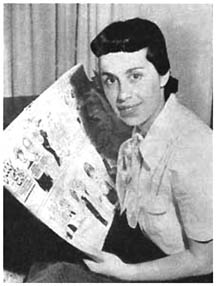
Marty Links was an American cartoonist best known for her syndicated comic strip Emmy Lou.
Santiago Argüello (1791–1862) was a Californio, a soldier in the Spanish army of the Viceroyalty of New Spain in Las Californias, a major Mexican land grant ranchos owner, and part of an influential family in Mexican Alta California and post-statehood California.

Juno and Avos is a popular Russian-language rock opera written by Alexey Rybnikov, poetry by Andrei Voznesensky. It was first performed in 1981 in the Lenkom Theatre, Moscow, directed by Mark Zakharov. Main roles in the premiere performed by Soviet stars Nikolai Karachentsov and Elena Shanina.
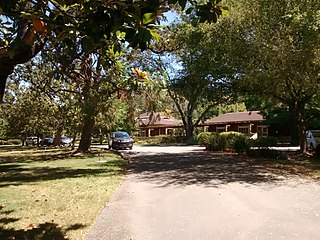
The Dominican Congregation of the Most Holy Name of Jesus, better known as the Dominican Sisters of San Rafael, is an institute of religious sisters belonging to the Third Order of St. Dominic founded in California in 1850 to teach the children of the new American territory. They also operate health facilities. They are located in San Rafael, California.
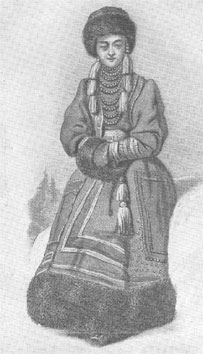
Natalia Alekseevna Shelikhova, was a Russian businessperson and the wife of Grigory Shelikhov, founder of Russian Alaska. She was one of the founders of the Russian-American Company and has been referred to as one of the first successful female entrepreneurs in Russia.

Argüello is a Spanish surname, most commonly associated with the early settlers in the cities of Granada, Nicaragua and of Córdoba, Argentina, as well as throughout Mexico and, in the United States, in what is now the state of California, the so-called Californio Argüellos.
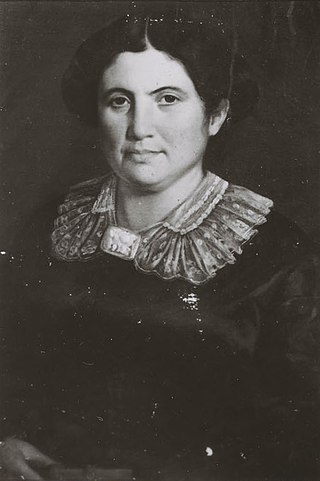
Doña Francisca Benicia Carrillo de Vallejo (1815-1891) was a Californio pioneer. A member of the Carrillo family of California, Carrillo was the wife of Mariano Guadalupe Vallejo. Carrillo was an early settler of Sonoma, California, the town founded by her husband. She survived the Bear Flag Rebellion and went on to oversee the Vallejo estate, Lachryma Montis, until her death in 1891. The city of Benicia, California is named after her.
Timofei Nikitich Tarakanov, also written Timofey Tarakanov, was born into serfdom in Kursk, Russia. His owner, Nikanor Ivanovich Pereverzev, sold him to the Russian-American Company (RAC) shortly after the company was created in 1799. He worked for the RAC in western North America and Hawaii from about 1800 to 1819. Tarakanov played an important role in the expansion of Russian operations south from Russian Alaska into Spanish California, usually as hunting party leader of indigenous sea otter hunters, mostly Aleut and Alutiiq people working for the RAC. This task often involved US maritime fur trade merchant ships transporting the hunting parties and their kayaks as far south as Baja California. Tarakanov played a key role in the founding of Fort Ross, California, and helped build and run Fort Elizabeth on Kauai in the Hawaiian Islands. He was granted manumission from serfdom and returned to his home near Kursk in 1819.











